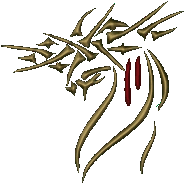The True Meaning Of Easter
The True Meaning of Easter
Ah, yes! This is that day of the year when people dust off their Bibles and head to a local Church (usually Catholic in doctrine), looking forward to their annual reminder of the true Meaning of Easter. But that is not what they are taught. And, No!, Yeshua is not the True Meaning of Easter!
The word Easter appears only once in the KJV at Acts 12:4. It is used there as a translation (rather an anachronistic mistranslation) of the Greek word pascha (Pesach), which is translated correctly as “passover” in the 28 other places where it occurs in the NT. The passage in Acts 12 refers to the seven-day Passover festival (including the Feast of Unleavened Bread). It is reasonably certain that the NT contains no reference to a yearly celebration of the resurrection of the Messiah.
Newer revisions of the KJV consistently translate the word pascha as “passover” in all passages, including (Acts 12:4 (cf. ASV, RSV, NEB). So where does the word “Easter” come from?
The English word “Easter” is derived from the name of a Teutonic (Anglo-Saxon) goddess of spring, “Eostre,” and to have been adapted, by Christians, to its present usage. In her honor sacrifices were offered at the time of the vernal equinox. By the Eighth Century the term came to be applied to the anniversary of Christ’s resurrection.
It was not until the Seventh Century A.D. that the Church became uniform in its observance of the Resurrection. The time agreed upon was the first Sunday following the full moon that comes on or after the vernal equinox (March 21). This allows for a variation in “Easter” dates from March 22 to April 25. Only One Easter
It boggles the mind that church-goers stamped their collective feet and pitched a hissy-fit about Halloween, and collectively got most Churches to at least adopt a “Harvest Theme” as a basis for Christian celebration and participation. But even now, in the Twenty-first Century, we have Christian Churches across the globe allegedly celebrating the apex of Christianity (a.k.a., The Resurrection of Yeshua Messiah), under the banner of EASTER!
And just to show complete indifference to this most glorious of all days, many Churches offer Easter Egg Hunts for the kiddies. How thoughtful and loving (I trust that the sarcasm is obvious). Still, Yeshua is mentioned most reverently, and many eulogize him most eloquently on this, the greatest of days. That is a bit like passing out free cigarettes at a rally to fight lung cancer.
Easter, Colored Eggs, Bunnies (chocolate or otherwise), Chicks (Peeps if you prefer), and Baskets of Shredded Plastic Grass ARE the True Meaning of Easter! Throw in the sacrifice of a bull and Eostre is, indeed, glorified. And those Churches which defer to that culture are sending mixed signals to children...signals that are more strongly reinforced with candy and games than some crazy old wives tale about some guy who was allegedly raised from the dead.
Where is the Church’s moral outrage? Where is the stamping of the collective feet of the Church? How did the Church decide that it is OK to use the Satanic term “Easter,” not just as A means, but as the DEFINITIVE means of celebrating the Resurrection of the Risen Lord Of Glory? By what word magic do we make a Satanic observance pure and clean enough to be utilized in honoring and worshiping the Savior? How dare ANY Christian Church employ the name of Eostre (Easter) as a reference to the Savior of the world being Resurrected from the dead!
And that ye may put difference between holy and unholy, and between unclean and clean; And that ye may teach the children of Israel all the statutes which the LORD hath spoken unto them by the hand of Moses. —Leviticus 10:10-11 (AV)
Now, before you make any attempt at begging contextual error by noting that this particular passage is dealing with the Levitical priesthood, I would direct your attention to a couple of New Testament passages: 1 Peter 2:5, 9; Revelation 1:5-6). So, I invite you priests and priestesses to continue reading.
The passage in Leviticus teaches us that priests have a duty to put a difference between what is holy and what is unholy (profane, satanic), and between what is unclean and clean. By merging the Resurrection with “Eostre” (Easter) we are declaring that the Satanically inspired “Eostre” is perfectly holy and clean. Let me ask you this question...”Would you lay chocolate bunnies, colored eggs, and plastic grass at the foot of the cross?” Would you take those items into the empty tomb and place them on the grave clothes?
That passage from Leviticus also teaches us (v. 11) that those same priests and priestesses have a duty to properly teach the children! Children are growing up today as spiritually hollow as those Easter Bunnies, and for good reason, their parents are equally hollow.
Will you be to one to tell the leadership of your Church that we need to get Eostre out of the Church and allow only the Resurrected Lord of Glory a place in the assembly? Will you be the one to put a difference between holy and unholy, and between unclean and clean? Will you be the one, or are you expecting someone else to do that?
If the Church of the Messiah is going to worship him in spirit and in truth, then we must divorce ourselves from Eostre. It is up to you because your neighbor is still out helping his children find the most Easter Eggs. §



